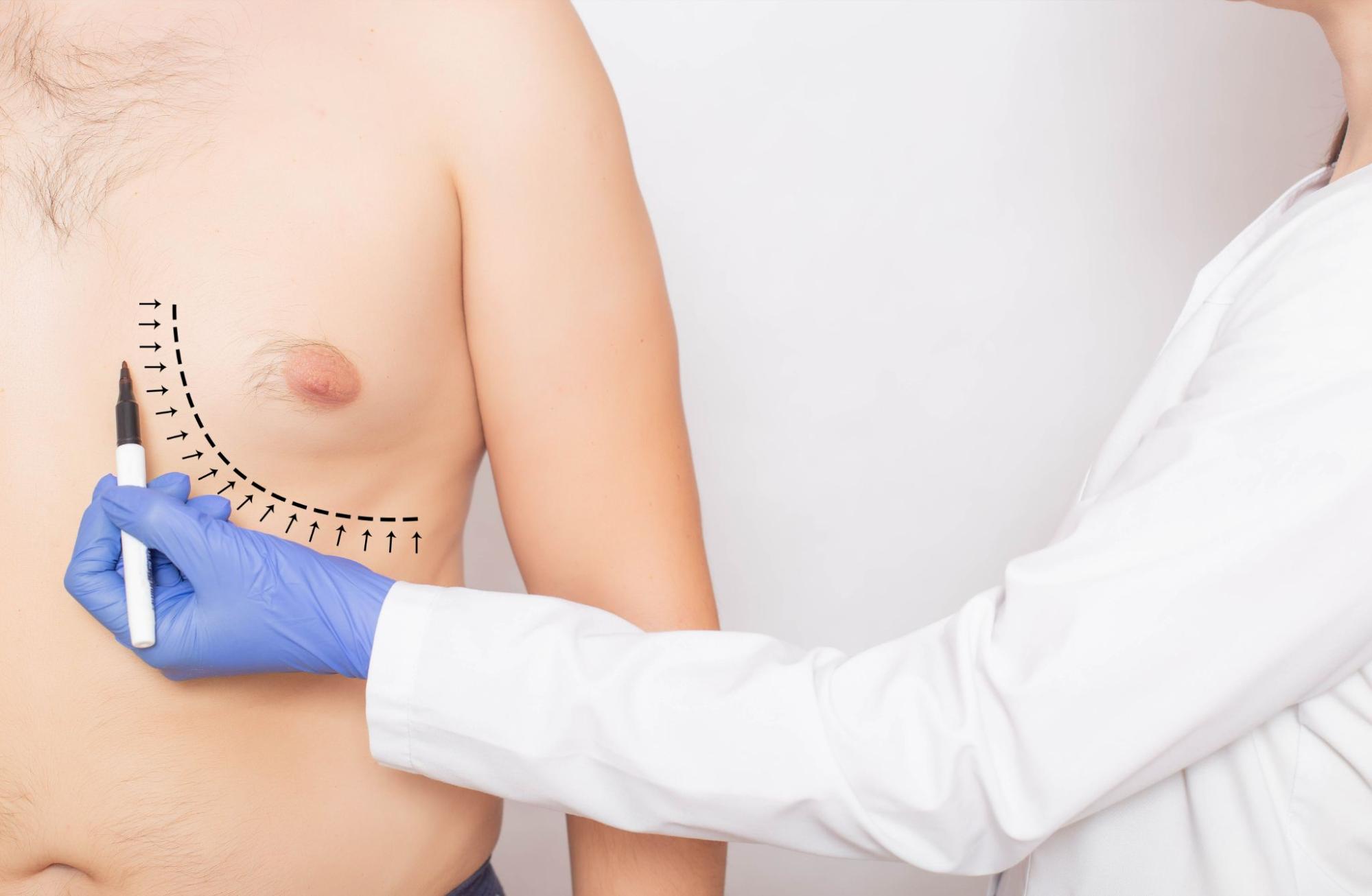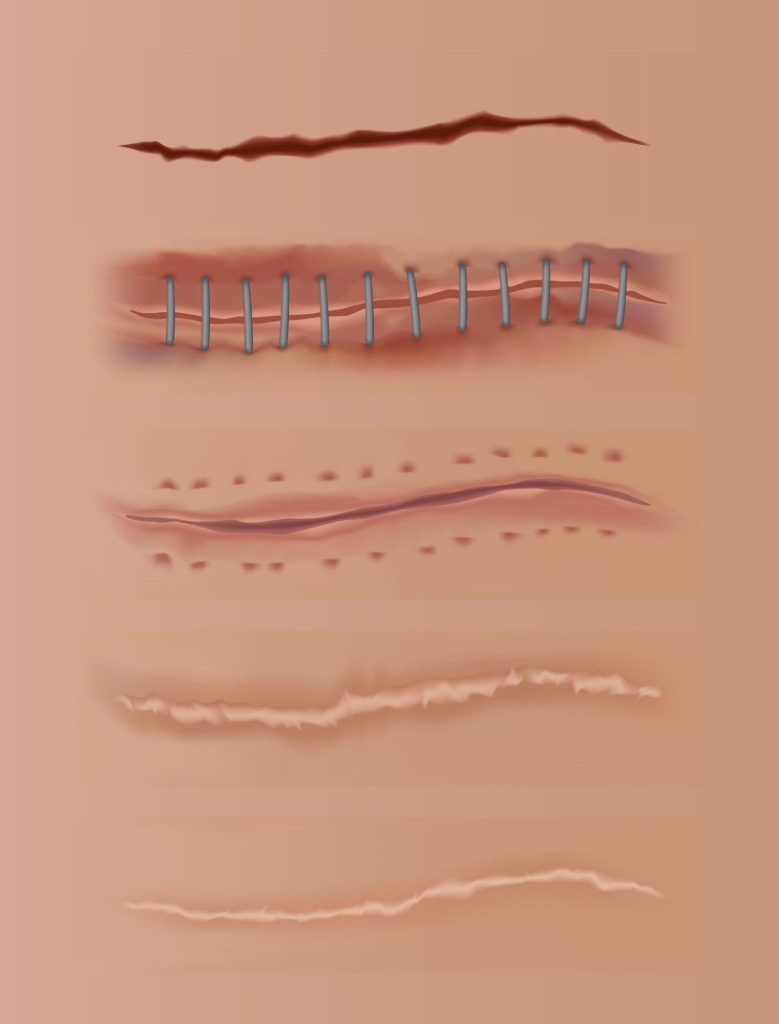Gynecomastia / Gynecomastia
Scar Tissue Formation After Gynecomastia Surgery: Is it Normal?

by admin
5th September 2023
6 minutes read
Introduction
As the famous saying goes, ‘common things occur commonly,’ it is not surprising to observe scar tissue formation following gynecomastia surgery. Gynecomastia, often colloquially referred to as ‘gyno,’ is a condition that results in the enlargement of breast tissue in men, often creating an appearance similar to female breasts. It can be distressing, lead to discomfort, and can impact a man’s self-esteem, thereby often necessitating gynecomastia treatment or surgery.
The procedure, technically known as male breast removal or man chest reduction surgery, aims to reduce the enlarged glandular tissue and excess fat, rendering a more masculine chest contour. However, like any surgery, gynecomastia surgery is not without its share of post-operative challenges, most notably, the formation of scar tissue.
Understanding Gynecomastia Surgery
Gynecomastia surgery, performed by experienced gyno surgeons, can involve liposuction, glandular tissue excision, or a combination of both, based on the patient’s condition and desired results. Not only can it help restore self-esteem, but it can also be a much-needed solution for bodybuilders with gynecomastia, who often find the condition impeding their professional progress and personal aesthetics.
The surgery’s success can be gauged by assessing gynecomastia surgery before and after images, which show the transformation from a fuller chest contour to a more masculine, firm appearance. Despite the surgery’s benefits, it’s crucial to be aware of the post-surgery challenges, particularly scar tissue formation, as part of the gynecomastia surgery aftercare.
Scar Tissue Formation: A Common Occurrence
Scar tissue formation is a natural and common occurrence following any surgical procedure, including gynecomastia surgery. When the body undergoes an invasive procedure such as male breast removal, it goes into a healing mode where it initiates a repair process. This healing process involves the production of collagen fibers that knit together the wound, ultimately forming what we know as a scar.
While scar tissue plays an essential role in wound healing, its formation can also lead to certain concerns for the patient, particularly when it comes to aesthetic outcomes. In the context of gynecomastia surgery, scar tissue can affect the appearance of the chest post-operatively. While some patients may have scars that are small and become less noticeable over time, others might end up with more noticeable scars. This largely depends on the individual’s body, including factors such as genetics, age, skin color, and even their lifestyle habits.

The specific location, length, and appearance of the scars also depend on the surgical approach used by the gyno surgeon, and how well the patient follows post-operative care instructions. If the scar tissue forms extensively, it can cause stiffness and affect the shape and smoothness of the treated area.
In order to minimize the appearance of scars, it’s important to follow a comprehensive scar management strategy. This can include topical treatments, pressure garments, silicone sheets, and even certain medical procedures in some cases.
Recovery from Gynecomastia Surgery & Scar Management
Managing and minimizing scarring begins right from the recovery phase. Your gynecomastia doctors will provide comprehensive instructions for gynecomastia after surgery recovery. Following these instructions religiously is the first step toward scar minimization.
The recovery from gynecomastia surgery can take several weeks, and it’s crucial during this period to avoid strenuous activities that might stress the incisions and cause more pronounced scarring. The use of scar-minimizing creams, silicone sheets, or gels, as recommended by your surgeon, can also help manage scar appearance.
Advanced Scar Removal Treatments
Despite the best care, some men may still experience noticeable scars. Fortunately, advancements in medical science have provided us with effective scar removal treatments.
Laser treatments, for example, can help to reduce the appearance of scars by breaking down the scar tissue and promoting the growth of new, healthy skin. Steroid injections can help to flatten raised scars and reduce their redness. Surgical revision is another option for scar reduction.
Before you proceed with any scar removal treatment, it’s important to discuss the options with your gynecomastia surgeon, as each treatment comes with its own set of risks and benefits.
The Role of Skilled Surgeons
While scar formation is a natural part of the healing process, the extent and appearance of scarring can be significantly influenced by the skill and experience of the gyno surgeon performing the procedure. Skilled surgeons can perform gynecomastia surgery using techniques that minimize visible scarring, placing incisions in natural folds of skin or areas that are easily concealed by clothing.
Conclusion
While the formation of scar tissue after gynecomastia surgery is common, it does not have to be a permanent hindrance to your aesthetic goals. With the right care during gynecomastia recovery, the use of appropriate scar removal treatments, and the skill of seasoned gyno surgeons, it is possible to achieve a masculine chest contour with minimal visible scarring.
Having realistic expectations and a thorough understanding of the process, from the surgery to the gynecomastia after surgery recovery, can equip you to handle the journey and enjoy the transformative results of your male gynecomastia treatment. In the end, the benefits of the man chest reduction surgery, from an improved physical appearance to renewed self-esteem, often outweigh the challenges that come with scar tissue formation.
How Can Medfin Help?
Medfin is a daycare surgery expert providing access to the latest surgical procedures and top doctors in your city at affordable prices. Medfin provides you access to top doctors and surgeons with 10+ years of experience . With Medfin, you can leave your hassles behind and focus on your health. From instant consultations to paperwork assistance, we have got you covered with everything. So why wait? Call us today!
FAQ
Scar tissue forms as a natural part of the body’s healing process following any invasive procedure, including gynecomastia surgery. After the enlarged breast tissue is removed, the body creates collagen fibers to help heal the surgical wound, which results in the formation of a scar.
While it’s impossible to completely prevent scar formation, its prominence can be minimized. Proper wound care, including cleanliness and avoiding stress on the healing incisions, is critical. Utilizing scar reduction creams or silicone sheets, as advised by your surgeon, can also be beneficial.
If you have a pronounced scar, there are various scar removal treatments available. Laser treatments can reduce the scar’s appearance, steroid injections can flatten raised scars, and surgical revision may also be an option. Always consult with your surgeon before proceeding with any treatment.
Yes, the skill and experience of the surgeon can significantly influence the extent and appearance of scarring. Experienced surgeons can use techniques that minimize visible scarring and place incisions in areas that are easily concealed by natural skin folds or clothing.
Some individuals use natural remedies like aloe vera gel, vitamin E oil, or silicone gel sheets to manage scar tissue. However, it’s essential to consult your surgeon before using any home remedies to ensure they won’t interfere with the healing process.
CATEGORIES
- ACL Reconstruction
- Anal Fissures
- Anal Fistula
- Appendicitis
- ASK A DOCTOR
- Benign Prostatic Hyperplasia
- Breast Lump Excision
- Cataract
- Circumcision
- Conditions & Diseases
- Cosmetology
- Covid-19
- Cure
- Endocrinology
- ENGLISH VIDEOS
- Eye Care
- Gallstones
- General Surgeries
- Government Schemes
- Gynaecology
- Gynecomastia
- Gynecomastia
- Health
- Health Insurance
- Hernia
- hindi
- Hip Arthoscopy
- Hip Replacement
- Hip Replacement Surgery
- Hydrocele
- Kannada
- Kidney Stones
- Knee Arthroscopic
- Laparoscopic
- LASER
- Latest Treatments
- Lifestyle
- Liposuction
- Medfin Stories
- Medicine
- Nephrology
- Ophthalmology
- Orthopaedic
- Paraphimosis
- Patient Testimonials
- PCL Reconstruction
- Phimosis
- Piles (Hemorrhoids)
- Pilonidal Sinus
- Proctology
- Prostate Artery Embolization
- Rhinoplasty
- Second Opinion
- Total Knee Replacement
- Uncategorised
- Urology
- uterine artery embolization
- Uterine Fibroids
- Varicocele
- Varicose Veins
- Vascular
- VIDEOS






